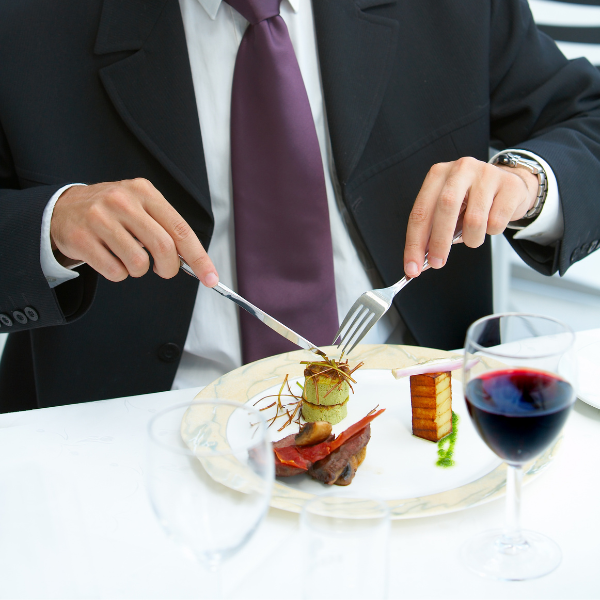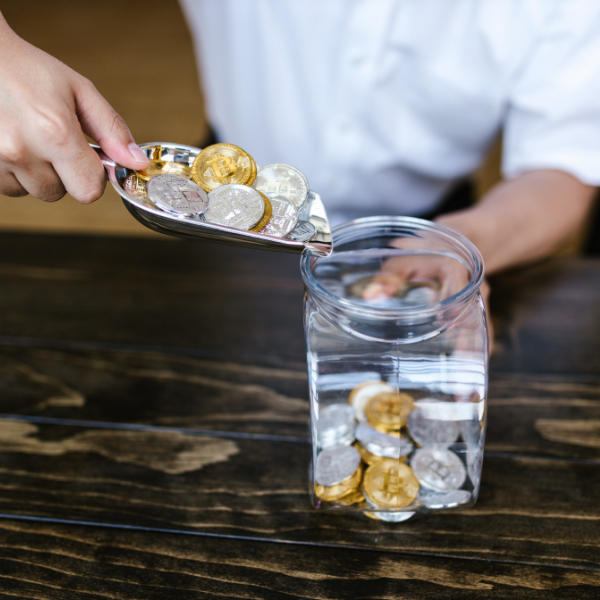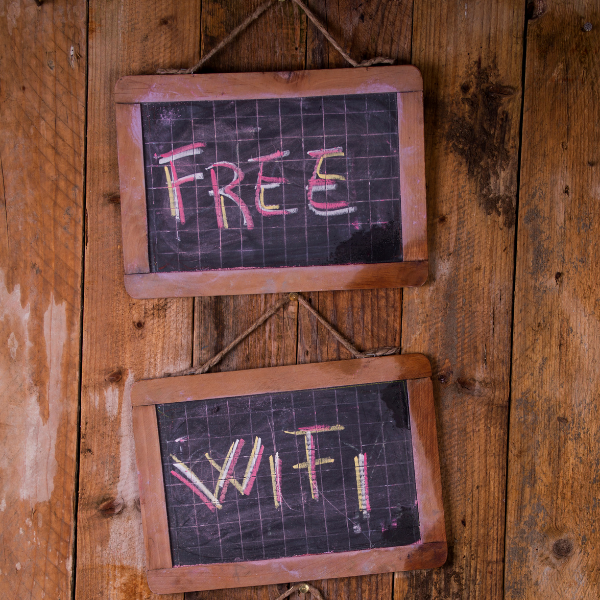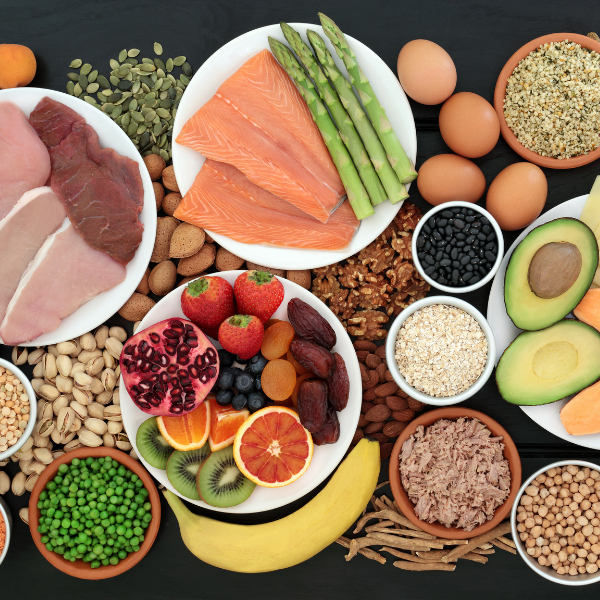Making the perfect cake requires precision, preparation, and a lot of attention to detail. When done correctly, you feel like you belong on the next bake-off show. But, one mistake can potentially leave your cake crumbling down (literally).
Luckily, a lot of cake-baking mistakes are pretty common and are easily avoidable. To get your next cake to be bakery-level quality, we've compiled a list of common cake baking mistakes, along with some ideas on how to avoid them.
Common Mistakes When Baking A Cake
If your cake has ever come out dry, cracked, or sunken in the middle, you're not alone. Luckily, there are ways to perfect your baking skills to avoid those mishaps in the future. Here are seven common cake baking mistakes you may be making and what you can do about them:
1. Not Properly Prepping Your Pan
If you don't properly prepare your pan, your cake can end up coming out of the oven stuck to the pan. The two best ways to prep your pan to avoid sticking are by properly greasing and flouring your pan or laying down a piece of parchment paper.
Greasing & Flouring
To grease your pan, take a bit of butter, shortening, or cooking spray to the inside of your pan. Make sure to lightly coat the whole pan, making sure no spots get neglected. Then, take a bit of flour and put it in the pan, tilting the pan back and forth until the flour has also coated the entire surface. Flip it over and shake out the excess.
Tip: Say you forgot to grease your pan and the cake comes out of the oven stuck. You can gently run a spatula around the edges and then give it a few pats. Another option is to put your cake back in the oven for about a minute or so to slightly heat it. Then, when you take it out, carefully remove it from the pan.
Parchment Paper
You can choose to add a piece of parchment paper to the pan for an easy
release. If you do so, make sure to repeat the greasing process over the
parchment paper as well.
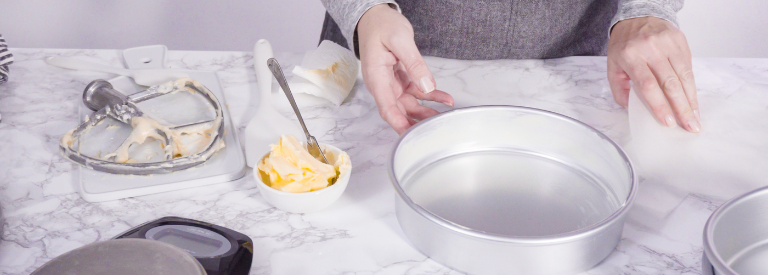
2. Using Expired Leaveners
Baking powder is one of the most important ingredients in your cake. Baking powder acts as a leavening agent, allowing you to have a nice, fluffy cake. Because baking powder and baking soda do have a long shelf life, we tend to keep them in our pantries for a long time, maybe even past their expiration date.
Using the wrong amount of leavening can yield a variety of results: a cracked cake, sunken cake, or domed cake. Using expired leavening can cause your cake to come out flat. In short, baking powder is super important to the cake baking process; don't neglect it!
Tip: If you're not sure if your baking powder is still good, there's a simple way to test it. Grab a glass of hot water and put a small scoop of baking powder inside. If it starts to bubble or fizz, it's still good. If there is little or no reaction, then you may want to consider buying new baking powder.
3. Using Cold Ingredients
When reading your cake recipe, you may notice it calls for certain ingredients at room temperature; there's a reason for that! Putting cold ingredients into the oven can cause the center of the cake to take longer to bake, resulting in browned edges and a gooey center. Using ingredients at the wrong temperature can potentially leave you with a dense cake.
Plan ahead! Take your ingredients out about an hour before you plan to start baking to allow them enough time to get to room temperature. Keep in mind that room temperature can vary depending on where you live. For example, if you live somewhere warm, your butter may reach room temperature much quicker than if you lived somewhere cold.
Tip: When focusing on room temperature butter, it's better to think about the consistency rather than the actual temperature. You want your butter to be soft, but not melted. Butter that's too soft will make a silky batter, while butter that is too cold and hard won't whip properly.
4. Not Measuring Properly
When measuring the ingredients for your cake, it's important to be as precise as possible. Estimating or approximating your measurements can seem harmless, but ultimately will affect your cake. Too much baking soda can make your cake taste metallic, or using larger eggs than instructed can lead to an eggy taste. The most important ingredient to properly measure -- aside from the aforementioned baking powder -- is your flour. Too much flour can make your cake dry, dense, or cause it to crack.
A common error in measuring flour is scooping it straight from the bag. Doing this causes the flour to pack into the measuring cup, leading to way more flour than you actually need. The best way to measure flour is to lightly fluff your flour first then sift it or sprinkle it into your measuring cup. One cup of flour measures to around 120 grams, so if you have a food scale handy, this is a great way to check if you have the right amount.
Tip: Be careful with substitutions! Unless you have
done research and are confident in a substitution, replacing ingredients
can seriously alter your cake. If you do choose to substitute
ingredients, be prepared for some potentially unexpected
results. 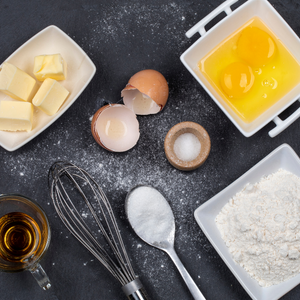
5. Opening the Oven
It can be tempting to open the oven door to get a peek at your cake. But, opening the oven door before your cake has finished baking can actually affect how your cake bakes, potentially leading to a concave or collapsed cake. Opening the oven door fluctuates the temperature of the oven. It lets in a rush of cold air, and the sudden change in temperature can lead to uneven baking.
The oven door should stay closed for the majority of the baking time, only opening to check once your cake is almost done baking. It is especially important not to open the oven within the first 1/3 of the baking time, as that is the most crucial part of the baking process. If you do want to look at or check on your cake while it's baking, use the window of the oven to get a look!
Tip: When you do go to check if your cake is done, it's helpful to slide the rack out enough to poke it rather than completely removing the cake from the oven. That way, you are not drastically changing the temperature of the cake in case it's not done baking yet.
6. Oven Temperature
Waiting for the oven to preheat can feel time-consuming. But, preheating the oven is a crucial step when it comes to baking your cake. If your oven isn't at the right temperature when you put your cake inside, your cake won't bake properly. Oven temperature is super important when it comes to cakes; you don't want the oven too hot or not hot enough.
If your oven is too hot, it can lead your cake to bake too quickly on the exterior and not baking enough on the inside. This results in a cracked top with an underbaked center, and an overall unevenly baked cake. If the oven isn't hot enough, the cake will bake too slowly and can cause it to fall and be dense. To accurately tell if your oven is at the right temperature, you can use an oven thermometer.
Ovens can have a tendency to be uneven or unreliable when it comes to the heat. Hot spots, parts of the oven that are hotter than others, are usually the back, top, and bottom of the oven. For the evenest results, place your cake on the middle rack in the center. Overcrowding the oven can also lead to uneven heat distribution and therefore uneven cakes, so try baking in batches to avoid this.
Tip: Even the pan you choose can affect how your cake
bakes! Darker pans tend to absorb heat so it leads to darker browning,
while lighter pans result in lighter browning. When possible, you may
want to try going for a lighter pan to avoid your cake browning too
easily.

7. Over Or Under Mixing
Over mixing the batter is the most common baking error and can result in a dense cake. Mixing the ingredients works the flour, activating the gluten. But, the more gluten that develops, the tougher your cake can be. If there is a damp or dense streak in your cake, you may have over creamed your eggs, butter, and sugar. To prevent this, just cream them together slowly, around medium speed on your mixer.
Don't let this scare you into undermixing your batter, either; ingredients still have to incorporate. While over mixing can lead to a cake that rises but then sinks as soon as it cools, under mixing can also have some negative results. Under mixing your batter can lead to less air being whipped into the batter and, subsequently, a crumbly cake.
Tip: Follow the recipe! It's there to help you. Mixing the ingredients in the order the recipe mentions helps yield the best results in the baking process. Alternating between wet and dry ingredients helps avoid gluten fibers from toughening. And, folding in dry ingredients by hand helps make sure the batter isn't over beaten.
Common Mistakes When Decorating A Cake
What happens when your cake comes out perfect, but you run into an issue with decorating? Cake decorating mistakes can be just as common as baking mistakes. You may be making some of these cake decorating errors, but here are some tips on how to fix them in the future.
How To Fix Cake Decorating Mistakes
- Don't frost a warm cake: Make sure your cake has cooled completely before decorating. A completely cooled cake has no heat on the inside in addition to the exterior of the cake.
- Don't skip the crumb coat: A crumb coat is an initial layer of icing to lock in crumbs to avoid them in your final layer of icing. By doing a crumb coat, your final layer of icing will come out smoother and cleaner.
- Chill your layers: Especially when it comes to a multilayer cake, chilling your layers helps with the icing process. It helps the cake firm up and therefore helps avoid crumbling or breaking when you're icing.
- Level your layers: If you are making a multilayer cake, ensure your layers are evenly leveled. If not, your cake will be lopsided and can potentially fall.
-
Use room temperature icing: Whether it's buttercream
or cream cheese frosting, you always want your icing at room
temperature, not straight out of the fridge. If it's too warm it will
run easily and if it's too cold, it will crumble and be more difficult
to use.
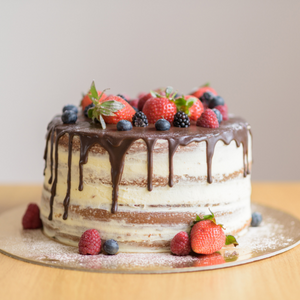
Practice Makes Perfect
Perfecting your cake baking skills can take a lot of trial and error. These tips are here to help you improve your craft and to help avoid some of these mistakes in the future. That way, you can bake your cake and eat it too.




